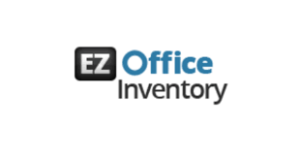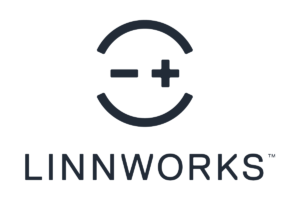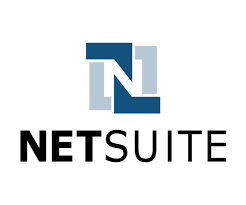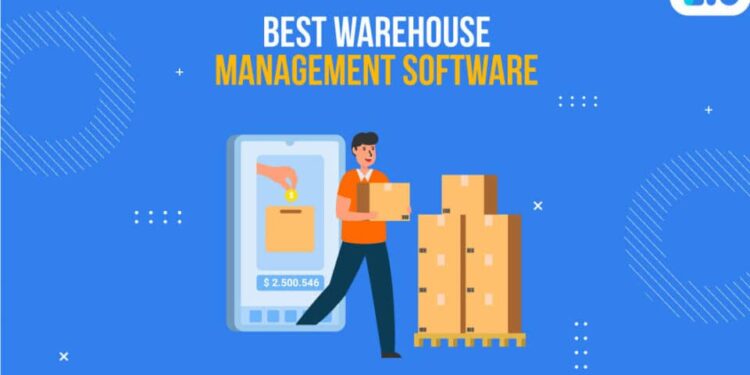In today’s fast-paced world, efficient and accurate inventory management is crucial for the success of any warehouse. With the advent of technology, software systems have become an integral part of warehouse inventory management. In 2024, numerous software systems will be available in the market, each with its own unique features and benefits.
To help warehouses make an informed decision, this article provides a list of the top 20 software systems for warehouse inventory in 2024. The software systems listed here have been carefully selected based on their popularity, reliability, functionality, and user-friendliness. Whether you are a small warehouse or a large one, there is a software system on this list that can meet your inventory management needs.
Key Features of Leading Warehouse Inventory Software
Leading warehouse inventory software systems are equipped with a range of features that enable businesses to efficiently manage their inventory and streamline their warehouse operations. Here are some of the key features that are commonly found in top-performing software systems:
Real-Time Inventory Tracking
Real-time inventory tracking is one of the most essential features of warehouse inventory software. It enables businesses to monitor their inventory levels in real time, which helps in avoiding stockouts, overstocking, and other inventory-related issues. With this feature, businesses can track their inventory levels across multiple locations and get instant updates on stock movements.
Order Management
Order management is another critical feature of warehouse inventory software. It allows businesses to manage their orders from start to finish, from receiving orders to fulfilling them. With this feature, businesses can easily create, track, and manage orders, as well as monitor the progress of each order in real-time.
Reporting and Analytics
Reporting and analytics features provide businesses with valuable insights into their inventory performance. With this feature, businesses can generate detailed reports on inventory levels, stock movements, order fulfilment, and other vital metrics. These reports help businesses identify trends, make informed decisions, and optimize their inventory management processes.
Integration Capabilities
Warehouse inventory software systems that offer integration capabilities enable businesses to connect their inventory management software with other business systems such as accounting software, ERP software, and e-commerce platforms. This feature helps businesses streamline their operations, reduce manual data entry, and improve data accuracy.
Scalability and Customization
Scalability and customization features enable businesses to adapt their inventory management software to their changing needs. With these features, businesses can easily add new users, locations, or products to their inventory management system as their business grows. They can also customize their software to meet their specific business requirements and workflows.
Top Warehouse Inventory Software:
Dive into the realm of warehouse inventory management with this comprehensive guide that delves into the intricacies of top software solutions. Discover the advantages of embracing automated systems and make an informed decision tailored to your requirements.
EZOfficeInventory:

Revolutionize asset tracking and administration effortlessly with EZOfficeInventory, a leading cloud-based solution catering to businesses of all scales. Gain insights and streamline management across multiple locations with its intuitive interface.
Features:
EZOfficeInventory offers a comprehensive suite of features designed to simplify asset tracking and management:
Cloud-Based Solution:
Access your asset data anytime, anywhere with EZOfficeInventory’s cloud-based platform. Enjoy the flexibility of managing assets from any device with internet access.
Asset Tracking:
Gain real-time visibility into asset locations, statuses, and usage. Track assets across multiple locations and departments to ensure accountability and minimize loss.
Barcode and QR Code Scanning:
Streamline asset identification and tracking with barcode and QR code scanning capabilities. Quickly scan assets in and out, conduct audits, and update asset information with a simple scan.
Customizable Asset Records:
Create customizable asset records to capture detailed information about each asset, including specifications, maintenance history, and warranty details. Tailor asset records to meet your organization’s unique needs.
Maintenance Management:
Schedule and track asset maintenance activities to ensure optimal performance and prolong asset lifespan. Receive alerts for upcoming maintenance tasks and track maintenance history for compliance and reporting purposes.
SkuVault:

Optimize warehouse organization and streamline inventory management with SkuVault, an eCommerce-focused tool offering seamless integration and prioritizing customer-centric operations.
Features:
SkuVault offers a robust set of features designed to streamline warehouse management and optimize inventory control:
Inventory Management:
Gain real-time visibility into inventory levels, locations, and stock movements. Track SKU variations, serial numbers, and lot numbers to ensure accurate inventory management.
Order Fulfillment:
Streamline order processing with features for picking, packing, and shipping. Optimize order fulfilment workflows to improve efficiency and accuracy in order processing.
Warehouse Organization:
Optimize warehouse layout and storage space utilization with features for bin management and slotting. Improve workflow efficiency and reduce picking times with optimized warehouse organization.
Multi-Channel Integration:
Seamlessly integrate with multiple sales channels, including e-commerce platforms and marketplaces. Sync inventory data and orders across all channels for centralized management.
Barcode Scanning:
Utilize barcode scanning technology to identify items quickly and accurately. Streamline receiving, picking, and inventory counts with barcode scanning to reduce errors and improve efficiency.
LinnWorks:

Experience streamlined order fulfilment and centralized inventory control with LinnWorks, a cloud-based solution designed to simplify vendor operations across various channels, boasting real-time updates and automation features.
Features:
LinnWorks provides a comprehensive set of features aimed at simplifying inventory management and order fulfilment processes:
Multi-Channel Order Management:
Streamline order processing across multiple sales channels, including e-commerce platforms, marketplaces, and retail stores. Consolidate orders from various channels into a centralized system for efficient management.
Inventory Control:
Gain real-time visibility into inventory levels and movements across multiple locations. Track stock levels, manage SKU variations, and prevent stockouts with automated inventory management features.
Warehouse Management:
Optimize warehouse operations with features for order picking, packing, and shipping. Utilize barcode scanning and mobile technology to improve accuracy and efficiency in warehouse tasks.
Order Fulfillment Automation:
Automate order fulfilment processes to reduce manual labour and improve order accuracy. Create rules and workflows to prioritize orders, allocate stock, and generate shipping labels automatically.
Channel Integration:
Seamlessly integrate with a wide range of sales channels and carriers for streamlined operations. Sync inventory data, update product listings, and manage shipping options directly from the LinnWorks platform.
QuickBooks Online:

Manage finances and streamline invoicing with QuickBooks Online, a cloud-based accounting software tailored to meet the financial needs of small to medium-sized enterprises, offering robust inventory management functionalities.
Features:
QuickBooks Online offers a wide range of features designed to streamline financial management and simplify accounting tasks:
Financial Tracking:
Easily track income, expenses, and profits with automated bank feeds and transaction categorization. Stay up-to-date on your business’s financial health with real-time insights.
Invoicing:
Create professional invoices and send them to customers directly from the platform. Customize invoices with your logo and brand colours, and track invoice status to ensure timely payments.
Expense Tracking:
Record and categorize business expenses effortlessly. Capture receipts on the go with the mobile app and reconcile transactions with bank statements for accurate financial records.
Reporting:
Generate customizable reports, including profit and loss statements, balance sheets, and cash flow statements. Gain insights into your business’s performance and make informed decisions based on real-time data.
Inventory Management:
Track inventory levels and sales in real time. Monitor stock levels, create purchase orders, and generate inventory reports to optimize inventory management processes.
Infoplus:

Empower your business with Infoplus, a comprehensive WMS offering real-time controls, customizable reports, and a customer-centric approach, all at affordable pricing plans suitable for startups and small enterprises.
Features:
Infoplus offers a wide range of features tailored to optimize warehouse management and streamline operations:
Inventory Control:
Maintain precise control over inventory levels with real-time tracking and visibility. Monitor stock quantities, locations, and movements to ensure accurate inventory management.
Order Fulfillment:
Streamline order processing from receipt to shipment with automated workflows and order prioritization. Optimize picking, packing, and shipping processes to fulfil orders quickly and accurately.
Warehouse Management:
Efficiently manage warehouse operations with features for layout optimization, slotting, and bin management. Maximize storage space and improve workflow efficiency.
Multi-Channel Integration:
Seamlessly integrate with multiple sales channels, including e-commerce platforms and marketplaces. Sync inventory levels, orders, and customer data across all channels for centralized management.
Customized Reports:
Generate customizable reports and analytics to gain insights into warehouse performance, inventory trends, and order fulfilment metrics. Monitor KPIs and make data-driven decisions to optimize operations.
Blue Link ERP:

Tailored for wholesalers and distributors, Blue Link ERP offers an integrated solution for warehouse management, inventory control, accounting, and order processing, featuring a user-friendly interface suitable for all skill levels.
Features:
Blue Link ERP offers a comprehensive range of features designed to streamline operations and support the needs of wholesalers and distributors:
Inventory Management:
Effectively manage inventory levels, locations, and stock movements with advanced inventory control features. Track item quantities, serial numbers, and lot numbers for accurate stock management.
Order Entry and Processing:
Streamline order processing from creation to fulfilment with integrated order management tools. Generate sales orders, manage backorders, and track order status in real time.
Warehouse Management:
Optimize warehouse operations with features for picking, packing, and shipping orders. Improve efficiency with barcode scanning, automated replenishment, and warehouse layout optimization.
Accounting and Financials:
Gain visibility into financial performance with robust accounting and financial management tools. Manage accounts payable, accounts receivable, general ledger, and financial reporting.
CRM Integration:
Enhance customer relationships and sales processes with integrated CRM functionality. Maintain customer records, track interactions, and manage leads and opportunities for improved sales performance.
NetSuite:

Gain complete control over your business operations with NetSuite, a cloud-based ERP solution offering advanced features like RF barcode scanning and mobile capabilities for efficient warehouse management.
Features:
NetSuite offers a comprehensive suite of features to streamline business operations and drive growth:
Cloud-Based ERP:
Access NetSuite’s powerful features anytime, anywhere through its cloud-based platform, eliminating the need for on-premise software installation and maintenance.
Financial Management:
Gain complete control over finances with features for accounting, financial planning, budgeting, and forecasting. Monitor cash flow, manage expenses, and generate financial reports with ease.
Inventory Management:
Optimize inventory levels and reduce carrying costs with advanced inventory management tools. Track stock levels in real-time, automate reorder points and manage multiple warehouses efficiently.
Order Management:
Streamline order processing from quote to cash with integrated order management capabilities. Manage sales orders, track order status, and automate order fulfilment processes for improved customer satisfaction.
Supply Chain Management:
Enhance visibility and control across the supply chain with features for procurement, vendor management, and demand planning. Ensure timely delivery of goods while minimizing costs and risks.
Kintone:

Empower non-technical users to create robust apps and workflows with Kintone, featuring pre-built apps and intuitive tools for seamless collaboration and data reporting.
Features:
Kintone offers a range of features tailored to enhance business processes and collaboration:
App Building Without Coding:
Enable non-technical users to create powerful custom apps, workflows, and databases with ease, empowering teams to address specific business needs without the need for coding expertise.
Data Reporting and Analysis:
Swiftly generate reports on complex data sets, enabling informed decision-making and strategic planning. Analyze business metrics and trends to identify opportunities for improvement.
Workflow Automation:
Automate repetitive tasks and streamline business processes by configuring workflows that trigger actions based on predefined conditions, reducing manual effort and increasing productivity.
Collaboration Tools:
Facilitate seamless collaboration among team members with built-in communication features such as comments, mentions, and notifications. Keep everyone informed and engaged throughout projects and tasks.
Pre-built Apps Library:
Access dozens of pre-built apps designed for various business use cases, including project management, CRM, and HR. Jumpstart your workflow with ready-to-use templates tailored to your industry.
PULPO WMS:

Optimize inventory and logistics processes in real time with PULPO WMS, a cloud-based solution offering centralized management and real-time tracking for effective warehouse operations.
Features:
PULPO WMS offers a comprehensive set of features designed to optimize warehouse management:
Real-Time Inventory Management:
Monitor inventory levels and movements in real-time for accurate stock control and efficient order fulfilment.
Centralized Platform:
Access all warehouse operations and data from a centralized platform, providing visibility and control across the entire supply chain.
Order Fulfillment:
Streamline order processing, picking, packing, and shipping to ensure timely delivery of goods to customers.
Automated Workflows:
Implement automated workflows for tasks such as receiving, picking, and replenishment to improve operational efficiency and reduce manual errors.
Barcode Scanning:
Utilize barcode scanning technology for fast and accurate identification of items, improving inventory accuracy and reducing picking errors.
IMRS360:

Enhance visibility and control over your business with Aptean irms|360, a cloud-based warehouse management solution offering comprehensive features to maximize space and resource utilization. Explore its potential with a range of compatible add-ons and connectors for enhanced functionality.
Features:
IMRS360 offers a range of features tailored to enhance warehouse management:
Visibility and Control:
Gain comprehensive visibility into warehouse operations and exercise precise control over inventory and resources.
Space Optimization:
Maximize space utilization within the warehouse to accommodate inventory efficiently.
Real-Time Tracking:
Monitor inventory movement and logistics processes in real time for accurate and up-to-date information.
Order Fulfillment:
Streamline order fulfillment processes to ensure timely delivery of goods to customers.
Scalability:
Adapt to changing business needs with a scalable solution capable of accommodating growth and expansion.
Comparative Analysis of Top Software Systems
System Usability
The usability of a software system is critical to its success. The top software systems for warehouse inventory in 2024 have a user-friendly interface, making it easy for users to navigate and perform tasks quickly. Systems such as SAP EWM, Oracle WMS, and Infor SCE have a well-designed interface that allows users to manage inventory, orders, and shipments with ease.
Customer Support Services
Customer support services are essential in ensuring that users get the most out of their software systems. The top software systems for warehouse inventory in 2024 have excellent customer support services. Systems such as Fishbowl Inventory, Zoho Inventory, and QuickBooks Enterprise have a dedicated customer support team that is available 24/7 to assist users with any issues they may encounter.
Pricing Models
The pricing model of a software system is an essential factor to consider when choosing a system. The top software systems for warehouse inventory in 2024 have flexible pricing models that cater to the needs of different users. Systems such as Acctivate, NetSuite, and Sage 100cloud have a variety of pricing plans that users can choose from, depending on their needs and budget.
User Reviews and Ratings
User reviews and ratings are an excellent way to gauge the effectiveness of a software system. The top software systems for warehouse inventory in 2024 have received positive reviews and ratings from users. Systems such as Odoo, TradeGecko, and SkuVault have received high ratings for their ease of use, customer support services, and pricing models.
Industry-Specific Solutions
When it comes to warehouse inventory management, different industries have different needs. That’s why many software systems offer industry-specific solutions to cater to the unique requirements of each sector. In this section, we’ll take a look at some of the top software systems that offer industry-specific solutions for manufacturing, retail, distribution centres, and third-party logistics.
Manufacturing
Manufacturing companies have complex inventory needs, with raw materials, work-in-progress, and finished goods all needing to be tracked and managed. Some of the top software systems that offer industry-specific solutions for manufacturing include:
- Fishbowl Manufacturing: This software system is designed specifically for small to mid-sized manufacturers, offering inventory management, job tracking, and production management capabilities.
- Plex: Plex is a cloud-based solution that offers end-to-end visibility and control over the entire manufacturing process, from planning and scheduling to inventory management and quality control.
Retail
Retail businesses need to manage a wide range of products, often with high turnover rates and seasonal fluctuations. Some of the top software systems that offer industry-specific solutions for retail include:
- Lightspeed Retail: This cloud-based software system offers a range of features, including inventory management, order management, and customer management, making it a popular choice for small to mid-sized retail businesses.
- Shopify: While Shopify is primarily known as an e-commerce platform, it also offers a range of inventory management features, making it a popular choice for online retailers.
Distribution Centers
Distribution centres need to manage large volumes of inventory, often with high turnover rates and tight deadlines. Some of the top software systems that offer industry-specific solutions for distribution centres include:
- SAP Extended Warehouse Management: This software system offers real-time inventory tracking, automated warehouse processes, and advanced analytics capabilities, making it a popular choice for large distribution centers.
- Manhattan Associates: Manhattan Associates offers a range of solutions for distribution centres, including inventory management, order fulfilment, and transportation management, making it a comprehensive solution for businesses of all sizes.
Read More: Top 20 Desk Booking Software in 2024: Navigating the Future
Third-Party Logistics
Third-party logistics (3PL) providers need to manage inventory for multiple clients, often with different requirements and specifications. Some of the top software systems that offer industry-specific solutions for 3PL providers include:
- HighJump: HighJump offers a range of solutions for 3PL providers, including inventory management, order fulfilment, and transportation management, making it a comprehensive solution for businesses of all sizes.
- 3PL Central: 3PL Central is a cloud-based software system that offers a range of features, including inventory management, order management, and billing and invoicing, making it a popular choice for small to mid-sized 3PL providers.
Innovation and Trends in Inventory Management
Artificial Intelligence
Artificial Intelligence (AI) is transforming the way warehouse inventory management systems operate. AI-powered inventory management systems can predict demand, optimize inventory levels, and automate replenishment processes.
By analyzing historical data and current trends, AI algorithms can make accurate predictions about future demand patterns. This enables companies to optimize their inventory levels and reduce costs.
Internet of Things (IoT)
The Internet of Things (IoT) is revolutionizing warehouse inventory management by connecting all the devices and sensors in a warehouse to a central system.
IoT devices can track inventory levels, monitor temperature and humidity, and detect when items are moved or tampered with. This real-time data can be used to optimize inventory levels, reduce waste, and improve overall efficiency.
Mobile Technology
Mobile technology is playing an increasingly important role in warehouse inventory management. Mobile devices such as smartphones and tablets can be used to scan barcodes, track inventory levels, and manage orders.
Mobile apps can also provide real-time data about inventory levels, order status, and shipment tracking. This enables warehouse managers to make informed decisions and respond quickly to changing conditions.
Cloud-Based Solutions
Cloud-based inventory management systems are becoming increasingly popular due to their scalability, flexibility, and affordability. Cloud-based systems can be accessed from anywhere, allowing warehouse managers to monitor inventory levels and manage orders from any device with an internet connection.
Cloud-based systems also offer real-time data analytics, enabling warehouse managers to make informed decisions based on current data.
Security and Compliance in Inventory Software
Data Security Features
When it comes to inventory management, data security is a top priority. The best software systems for warehouse inventory in 2024 offer robust security features to ensure data is safe and secure.
These features include robust encryption, secure access controls, and data backup and recovery.
Encryption is used to protect data from unauthorized access by converting it into a code that can only be deciphered with a key. Access controls ensure that only authorized personnel can access sensitive data, and data backup and recovery features ensure that data can be retrieved in the event of a disaster.
Regulatory Compliance
In addition to data security, regulatory compliance is also an important consideration when choosing inventory software. The best software systems for warehouse inventory in 2024 are designed to comply with a range of regulations, including those related to data privacy, product safety, and environmental protection.
For example, the software may include features that allow for tracking and reporting of hazardous materials or that ensure compliance with regulations related to the handling and storage of certain products. Additionally, the software may be designed to comply with data privacy regulations such as GDPR or CCPA, which require companies to protect personal data and give individuals greater control over how their data is used.
Implementation Strategies for Inventory Systems
Project Planning and Roadmaps
Implementing a new inventory system can be a complex process, but with proper planning and a well-defined roadmap, it can be a smooth transition.
The project planning phase should include a detailed analysis of the current inventory management processes and the identification of areas for improvement. This will help define the scope of the project and set realistic expectations for implementation.
Creating a roadmap with clear milestones and timelines can help keep the project on track and ensure that everyone involved is aware of their responsibilities. It is essential to involve all stakeholders in the planning phase to ensure that the project aligns with the business objectives and meets the needs of all parties involved.
Training and User Adoption
One of the most critical aspects of implementing a new inventory system is ensuring that users are trained and comfortable with the software.
Without proper training, users may struggle to use the new system, leading to frustration and a lack of adoption.
Training should be provided to all users, including managers, supervisors, and warehouse staff. The training should cover the basics of the system, including how to navigate the interface, enter data, and generate reports. Ongoing training and support should also be provided to ensure that users remain proficient in using the system.
Data Migration Considerations
When implementing a new inventory system, it is essential to consider the migration of existing data. This includes inventory levels, item descriptions, and other critical information.
Data migration can be a complex process, and it is essential to ensure that the data is accurate and complete.
Before migrating data, you should clean and validate the existing data to ensure that it is accurate and up-to-date. This can involve identifying duplicate entries, correcting errors, and updating missing information. You should also ensure that the data is compatible with the new system and that any necessary conversions are performed.
Future Outlook and Developments in Inventory Software
The future of warehouse inventory software looks promising, with advancements in technology allowing for even more efficient and accurate inventory management. Here are a few developments to keep an eye on:
1. Integration with IoT
The Internet of Things (IoT) is a network of devices that are connected and able to communicate with each other. In the context of inventory management, this means that sensors and devices can be used to collect data on inventory levels and movements in real time. This data can then be fed directly into inventory software, allowing for more accurate and up-to-date tracking.
2. Artificial Intelligence
Artificial Intelligence (AI) is already being used in some inventory software systems to predict demand and optimize inventory levels. In the future, AI may become even more prevalent. It may gain the ability to analyze data from various sources and make recommendations for inventory management.
3. Mobile Compatibility
More and more workers rely on mobile devices to perform their jobs. Therefore, inventory software will need to be compatible with these devices. This means that inventory software will need to be optimized for mobile use. It should have features such as barcode scanning and real-time updates.
FAQs:






